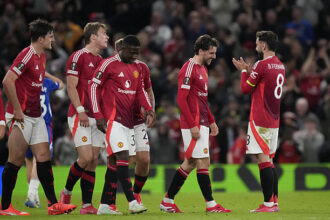
While British football giants are speeding up with monumental stadium projects to enhance revenue and expand influence, Chelsea seems to be left behind. The recent statement of Todd Boehly – co -owner of the club – has revealed a hard time to deny: Chelsea’s new stadium may have to wait until 2042 to become a reality.
At the Milken Institute global conference in the US, Todd Boehly revealed that the new yard plan was a “long-lasting” project, and that the club leadership has set a goal for 15-20 years to realize this idea. Although affirming that the first priority factor is the interests of fans, the American billionaire also acknowledged the project size is too big and encountered many barriers from stakeholders in an expensive and crowded city like London.
Stamford Bridge – the house of Chelsea since 1905 – has been renovated many times, but the current capacity only stops at 40,173 seats, the lowest in the “Big Six” group of the English Premier League. In the context of rivals such as Tottenham, Arsenal, Liverpool or Manchester City have been newly built or overhauled the stadium to improve the revenue of the competition, Chelsea are “trapped” with outdated infrastructure and not enough capacity to serve the growing needs of fans.
The difference in home revenue is creating a significant distance. In the 2023/24 season, Chelsea earned about £ 54 million from the matches at Stamford Bridge. Compared to Tottenham, the team has a new yard with a much larger capacity, the difference in revenue each match is up to £ 2.7 million – about 51.3 million pounds per premier League season. If it lasts until 2042, Chelsea can lose up to £ 872 million compared to the London rival – a huge amount of money to invest in many expensive contracts.
Not only falling back in the yard revenue, Chelsea is also facing the future of uncertainty about television income. In the 2023/24 season, television copyright gives the club 163.1 million pounds – accounting for nearly 35% of total revenue of 468.5 million pounds. When the revenue from television tends to slow down, clubs are forced to rely on the stadium and commercial activities to maintain competitiveness.
Chelsea had made steps in the commercial segment, with revenue of up to 225 million pounds in the past year. At the same time, the possibility of returning to the Champions League and attending the World Cup Club also opens up new financial opportunities. However, without a modern stadium and can be exploited all year round, the club will have difficulty in sustainable development.

Chelsea’s problem is in the prime location in London. The attraction of this city is the advantage of trade, tourism and media, but at the same time, the cost of building a new stadium is too high. Boehly did not hide the ambition to create a large project – similar to the stadium of Tottenham with NFL events, the F1 Karting race – but to do that, they need a smart financial strategy and a more reasonable time fund.
If it is impossible to accelerate in the project of building a new yard, Chelsea – the team is ranked fifth in the Premier League rankings, at risk of being surpassed not only on the pitch but also in the financial race with direct opponents. In the context of leading European clubs such as Manchester United, Real Madrid or Barcelona are promoting the development of infrastructure, the stadium is no longer the story on the sidelines but has become the decision factor of a modern team.




